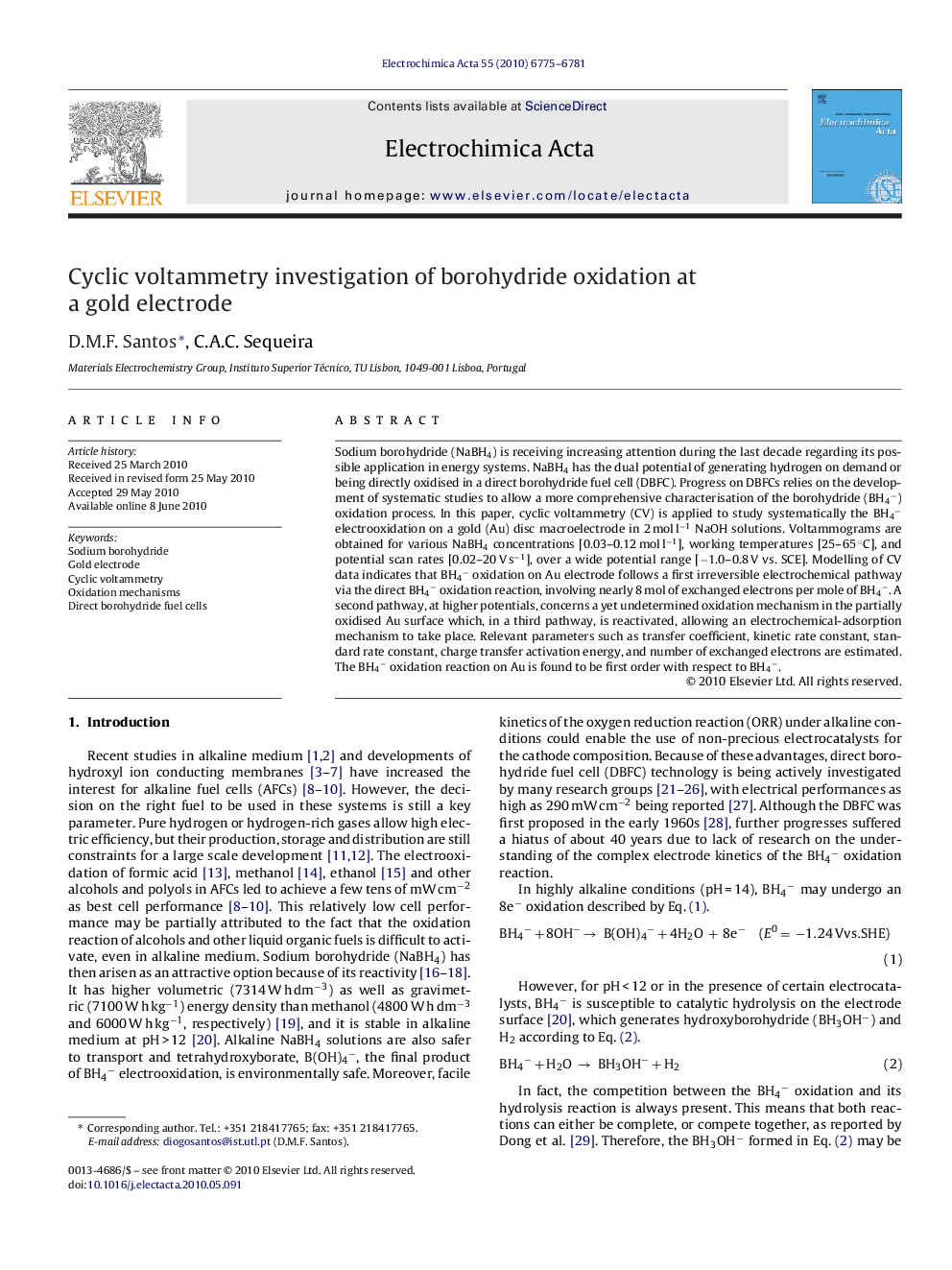| Article ID | Journal | Published Year | Pages | File Type |
|---|---|---|---|---|
| 192235 | Electrochimica Acta | 2010 | 7 Pages |
Sodium borohydride (NaBH4) is receiving increasing attention during the last decade regarding its possible application in energy systems. NaBH4 has the dual potential of generating hydrogen on demand or being directly oxidised in a direct borohydride fuel cell (DBFC). Progress on DBFCs relies on the development of systematic studies to allow a more comprehensive characterisation of the borohydride (BH4−) oxidation process. In this paper, cyclic voltammetry (CV) is applied to study systematically the BH4− electrooxidation on a gold (Au) disc macroelectrode in 2 mol l−1 NaOH solutions. Voltammograms are obtained for various NaBH4 concentrations [0.03–0.12 mol l−1], working temperatures [25–65 °C], and potential scan rates [0.02–20 V s−1], over a wide potential range [−1.0–0.8 V vs. SCE]. Modelling of CV data indicates that BH4− oxidation on Au electrode follows a first irreversible electrochemical pathway via the direct BH4− oxidation reaction, involving nearly 8 mol of exchanged electrons per mole of BH4−. A second pathway, at higher potentials, concerns a yet undetermined oxidation mechanism in the partially oxidised Au surface which, in a third pathway, is reactivated, allowing an electrochemical-adsorption mechanism to take place. Relevant parameters such as transfer coefficient, kinetic rate constant, standard rate constant, charge transfer activation energy, and number of exchanged electrons are estimated. The BH4− oxidation reaction on Au is found to be first order with respect to BH4−.
